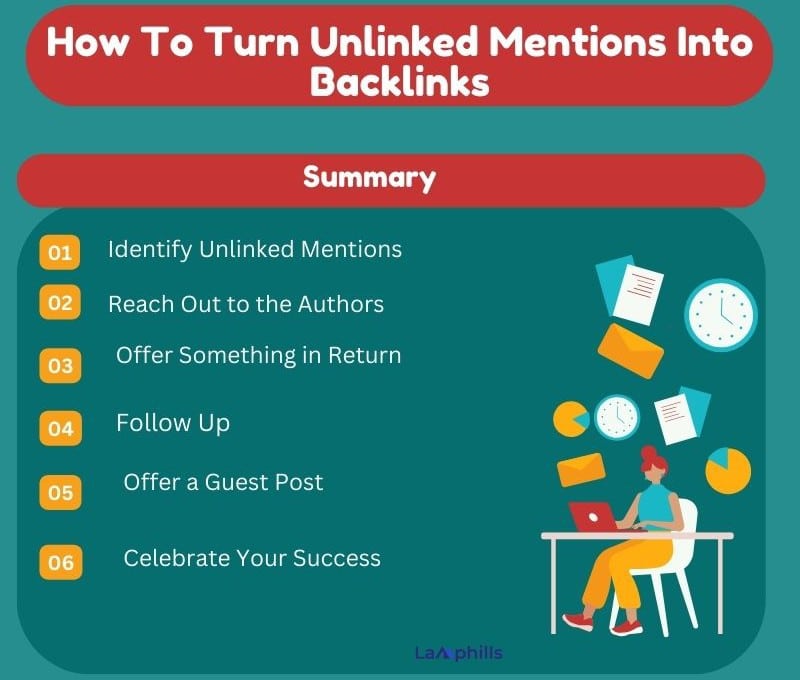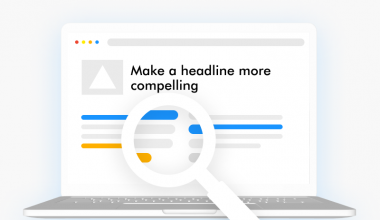I guess you’ve stumbled on an article or blog post online where your brand is mentioned, but there is no clickable link directing readers back to your website. As a business owner or a marketer, this can be frustrating because those unlinked mentions are missed opportunities for valuable backlinks. However, fear not! In this article, I will share practical tips and strategies that work best. I’ll guide you on how to turn unlinked mentions into backlinks, including SEO effectively. So, if you are still wondering how to turn unlinked mentions into backlinks and boost your website’s SEO authority, keep reading for the best strategies!
Key Points
- Unlinked mentions refer to instances where your brand, product, or content is mentioned on a website, but there is no hyperlink directing readers back to your website.
- With polite requests to website owners or authors of the content that mentions your brand, they can add a link to your website.
- Tools like Google Alerts, Mention, or SEMrush help keep track of where your brand is being mentioned online.
- Following up on your outreach efforts also increases the chances of getting a backlink from unlinked mentions.
- Besides, building positive relationships with website owners makes turning unlinked mentions into valuable backlinks for your website easier.
How to Turn Unlinked Mentions into Backlinks
So, you want to turn those unlinked mentions into valuable backlinks and improve your SEO performance huh? Well, you’ve come to the right place! Let me share some practical tips based on my own experiences that can help you with this.
Step #1: Identify Unlinked Mentions
First things first, you need to know where your brand is being mentioned but not linked back to your website. This can be through social media posts, blog articles, or online publications. One way to do this is by setting up Google Alerts for your brand name or using tools like Ahrefs or SEMrush to track mentions. These tools can help you turn unlinked mentions into backlinks and improve SEO effectively.
I once stumbled upon a blog post that mentioned my company but didn’t include a link. I reached out to the author to kindly ask if they could add a link to our website, and they were happy to oblige. So, you see_it never hurts to ask!
Step #2: Reach Out to the Authors
Once you’ve identified these unlinked mentions, it’s time to reach out to the authors or website owners. Be polite and friendly in your approach. Let them know that you appreciate the mention and kindly request that they add a link back to your site for added context or as a resource for their readers.
Recently, I sent a personalized email to a journalist who had mentioned our product in an article but forgot to link back to us. Also, I shared why the link would be valuable to their readers and offered to provide any additional information they might need. Guess what? They ended up adding the link without any issues. So, this is how I got our unlinked mentions turned into backlinks, increasing our SEO performance.
Step #3: Offer Something in Return
Sometimes, offering something in return can sweeten the deal and encourage authors to add the backlink. It’s not a big deal! This can be in the form of promoting their content on your platforms, sharing their work with your audience, or even offering a testimonial for their website.
I have done it before and it worked. Yeah! I once offered to promote an author’s upcoming book on our social media channels in exchange for them adding a backlink to our website. It was a win-win situation, as we both got some extra visibility out of it. Therefore, don’t joke with this step to turn unlinked mentions into backlinks.
Step #4: Follow Up
Don’t be discouraged if you don’t get a response right away. Follow up politely after a week or so to remind them about your request. Sometimes, authors are busy and may have missed your initial email.
Moreover, I once had to follow up with a blogger three times before they finally added the backlink to our site. Patience and persistence paid off in the end, so don’t give up too soon!
Step #5. Offer a Guest Post
Offering a guest post is a common strategy used in digital marketing to acquire backlinks from high-quality websites. If the website owner is hesitant to add a backlink to an existing article, you can offer to write a guest post for their website instead. This way, you can include a backlink to your website within the guest post.
Besides, I successfully offered a guest post when I reached out to a popular industry blog within my niche. I proposed a topic that aligned with their content interests and provided a brief outline of the article’s key points. Also, I highlighted how the guest post would offer unique insights to their audience and included a request to include a backlink to my website within the post.
After reviewing my pitch, the blog editor accepted my proposal, and the guest post was published with a backlink to my website. Hence, driving relevant traffic and enhancing my website’s SEO performance. Lovely, isn’t it? You too can explore this strategy and turn your unlinked mentions into backlinks.
Step #6. Celebrate Your Success
Finally, celebrate every backlink you earn! One thing about turning unlinked mentions into backlinks is that it yields good results. It’s a testament to your hard work and can have a significant impact on your website’s SEO performance.

Therefore, the above steps can help you be successful in generating high-quality backlinks and improving your website’s search engine rankings. Remember, patience and persistence are key when it comes to turning unlinked mentions into backlinks.
What Is A Linked Mention?
Linked mention is a valuable SEO strategy that involves mentioning a brand, person, or product within the content of a web page and linking it back to the source or related webpage. This type of mention helps to establish connections between different web pages and improve the overall SEO performance of a website.
For example, if you are writing a blog post about a new product release, you can mention the brand name in your content and link it back to the product page on the brand’s website. This not only provides additional context for your readers but also creates a valuable backlink for the brand’s website, which can help improve its search engine rankings.
What Are The Different Types Of Mentions?
Mentions can come in various forms, and each type serves a different purpose. Let me break it down for you:
#1. Direct Mentions
These are the most straightforward types of mentions where you reference or tag someone directly with their username or handle. For example, if you tweet “@JohnSmith, thanks for the great advice!” You are directly mentioning John Smith.
#2. Indirect Mentions
Indirect mentions are when you refer to a person without tagging them directly. For instance, “I just read a fantastic article by a talented writer who inspired me.” Here, the writer is indirectly mentioned without tagging them.
#3. Self-Mentions
As the name suggests, self-mentions occur when you refer to yourself and your work. This type of mention can come across as self-promotional if overused but can be effective when used strategically.
#4. Brand Mentions
Brand mentions involve referencing or talking about a particular brand, product, or service. For example, “I love the new shoes I bought from XYZ brand – so comfortable and stylish!”
#5. Influencer Mentions
Influencer mentions happen when you recognize or talk about influencers, celebrities, or well-known personalities in your content. It can be something like “I follow @xxxx for all the latest trends in fashion.”
#6. Hashtag Mentions
Mentions can also be in the form of hashtags. I mean where specific keywords or phrases are used to categorize content. For instance, “#ThrowbackThursday to my amazing vacation last summer! #TravelGoals”
So, the next time you’re engaging with someone or talking about a brand or person online, pay attention to these mentions. They add a personal touch to your interactions and help you connect with your audience in a meaningful way. So, I look forward to receiving your mentions regarding my articles to your family and friends, colleagues, followers, etc.
How To Turn Unlinked Mentions Into Links?
If you come across unlinked mentions of your brand or website in articles or blog posts, it’s a great opportunity to turn those mentions into clickable links that can drive traffic to your website and improve your SEO.
The first step is to reach out to the author or website owner and kindly ask them to turn the mention into a link. You can explain how it benefits both parties. I mean providing additional information to their readers and driving traffic to your site.
If you can’t contact the author directly, another option is to use tools like Google Alerts or Mention to monitor mentions of your brand online. Once you identify the unlinked mentions, you can reach out to the website owners and request them to add the links.
Remember to always be polite and appreciative when reaching out, as building positive relationships in the online community is key. Turning unlinked mentions into links is a simple yet effective way to boost your online presence and drive more traffic to your website. So, don’t miss out on this opportunity to make the most out of every mention of your brand!
How To Find Brand Mentions Without Links?
Have you ever wondered how you can track brand mentions even without a direct link? Well, let me tell you from my own experience how I do it.
One of the most common methods is to set up Google Alerts for your brand name. This way, you’ll receive notifications whenever your brand is mentioned online, even if there isn’t a hyperlink attached. It’s a simple and effective way to stay informed about what people are saying about your brand across the web.
Another useful strategy is to monitor social media platforms manually. By searching for your brand name on platforms like Twitter, Instagram, and Facebook, you can easily find mentions that may not include links. Engaging with these mentions can help you build relationships with your audience and address any concerns or feedback they may have.
So, even if there isn’t a direct link involved, there are still numerous ways to track and monitor brand mentions online. It just takes a little bit of proactive searching and monitoring to stay on top of your brand’s online presence. Below are effective tools that can help you!
Effective Tools That Help to Turn Unlinked Mentions Into Backlinks
Related Articles
Buzz Marketing in 2024: Top Tactics for Cutting Through the Noise
Backlink Outreach: Meaning, Types & How to Build a Successful One
SEO Outreach Explained: A Beginner’s Guide to Getting Quality Backlinks






